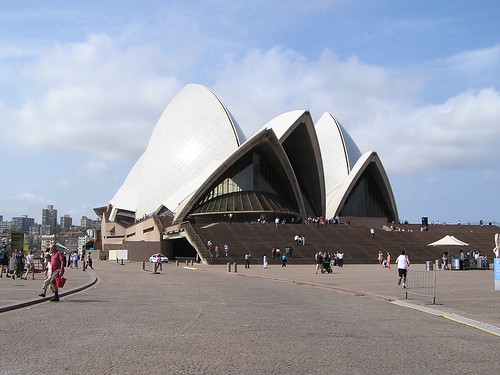Commodification of the public realm: when does incorporating advertising into government/public spaces and programs cross the line?
======
Update: Over the weekend, riding past the old Carnegie Library in DC, which is being converted to an Apple Store on the ground floor, although public uses will remain on the second floor, is another example of a community ceding control of a premier civic asset and element of the public realm to the private sector.
-- "Apple offers first peek at plans to convert D.C.’s Carnegie Library into new store," Washington Post

======
I was going to write something about this last month, hearing that NASA was looking at advertising and other forms of sponsorship around the space program ( "Corporate Sponsors for NASA? Agency to Study Making Space for Advertising," New York Times and"Commentary: Should NASA Sell Ads?," Air & Space Magazine)
 Alongside the campaign of Dominos Pizza to fill road potholes "so the pizza in your won't get bumped by a poor quality ride" ("Why Domino’s Pizza Is Fixing Potholes Now," CityLab).
Alongside the campaign of Dominos Pizza to fill road potholes "so the pizza in your won't get bumped by a poor quality ride" ("Why Domino’s Pizza Is Fixing Potholes Now," CityLab).While the ad campaign shows the company doing the work, it's actually a grant program offering $5,000 to as many as 20 locations. They're getting a lot of press for $100,000.
-- Domino's Paving for Pizza
It reminds me of the old line during the Vietnam anti-war campaign: "t will be a great day when our schools get all the money they need and the air force has to hold a bake sale to buy a bomber."
Both are indicators of failure to support through taxes and programmatic priorities public programs and priorities.
But the Sydney Opera House being forced as the result of a campaign by a radio shockjock DJ and the local newspaper which publishes a newspaper on horse racing to display promotions on the facade of the building might take commercialization and commodification of the public space to a new level ("'It's not a billboard': anger at use of Sydney Opera House for horse racing ads" and "Sydney Opera House ordered to display horse racing advertising on its sails," Guardian). From the second article:
The NSW government has ordered the Sydney Opera House to display a racing trophy with the word Everest on it and jockey numbers and colours on its sails in contravention of a policy to prevent the commercialisation of the building.The building is an architecture icon of the brutalism style and is a UNESCO designated heritage site.
The decision by premier Gladys Berejiklian came late on Friday afternoon after intense pressure from the Daily Telegraph and 2GB’s Alan Jones to accept a plan by Racing NSW to promote the Everest Cup on the iconic landmark.
Racing NSW applied to the Opera House to use it as a venue to promote a horse race on Saturday 13 October, but Sydney Opera House chief executive Louise Herron drew the line at projecting horses’ names, the name of the race and the numbers of the barriers onto the Opera House sails.
The building

With an artistic projection

SYDNEY, AUSTRALIA - MAY 27: The Sydney Opera House sails are illuminated on opening night of the 2011 Vivid Sydney Festival on May 27, 2011 in Sydney, Australia. The annual festival offers many free and ticketed events as port of it's program and runs until June 13. (Photo by Mark Nolan/Getty Images)
rendering of the racing promotion

The commentary about NASA by Bob Garfield, a journalist covering the ad industry, makes the point that "we should admit how much we allow commercials to intrude in our lives."
 But that isn't the point. It's not about all the different places that "commercials intrude" it's about actively inserting commercial messages on public property and public goods.
But that isn't the point. It's not about all the different places that "commercials intrude" it's about actively inserting commercial messages on public property and public goods.I argue there is a difference between an ad in a bus shelter--which is a public facility installed in public space--and an ad projected on a rocket being shot off into space, or an advertising message being projected on one of the world's most iconic buildings, one that is publicly owned.
-- Adbusters Media Foundation
-- "Creating Sense of Community: The role of public space," Jacinta Francis, Billie Giles-Corti, Lisa Wood and Matthew Knuiman, Journal_of_Environmental_Psychology 32(4):401-409 (2012)
I made similar arguments when for a fair amount of time, the city argued that the only way we could pay for a full rehabilitation and improvement of the central library was to build market rate space on top of it.
A city's central library, city hall, and a handful of other buildings are the premier facilities defining the public realm and public goods and shouldn't be seen as merely another building nor as an opportunity to make a buck.
That being said, there are plenty of ways to "make a buck" integrating commercial space and activities, when appropriate, when it complements and extends the mission of the program, as I suggested in expanding beyond a straight up library to a major library, media, and cultural center ("Civic assets and mixed use").
Kaid Benfield's CityLab article, "The Important Difference Between a Public Space and a 'Common'," discusses these issues in terms of "the commons." He distinguishes between different types including environmental commons (lakes, rivers, natural spaces, etc.) and urban commons, writing:
By definition, the commons of people habitat is mostly found in urban areas – cities, towns, and suburbs – where about half the world and over four-fifths of Americans reside. Its most visible manifestation is in our shared public spaces: streets, parks and plazas, libraries, schools, waterways, public transportation, public markets, courthouses, and so on. I would certainly include some privately owned and managed sites of public significance such as places of worship, private museums, sports and cultural venues, and university campuses open to the public.While there is no question that "commerce is the engine of urbanism," and that commercial spaces often comprise our network of "third places" (Ray Oldenburg), there is a hierarchy of spaces in the public realm where "the intrusion of commercials" are seen as intrusions and costs, not benefits.
Labels: commodification of the public space, integrated public realm framework, public goods, urban design/placemaking



2 Comments:
I think you’ve got to identify where the publi-private partnership is a partnership (arguably the apple store, bus stop ads, etc) versus where the essential value of the partnership is just PR.
Yes.
To me they're all just contractual arrangements, mostly about financing. But the government entity convinces itself that it's a partnership and usually leaves a goodly amount of value and/or flexibility off the table.
Generally, the business-side "partner" has no interest in doing anything that contributes to "the commons," ancillary economic development, etc., unless it specifically contributes to marginal return. But since there isn't a system for harvesting those opportunities within the contractual agreement, it doesn't happen.
It's true that the Apple Store takes care of running an expensive building while allowing the nonprofit use to continue.
Bus shelters are a value in return for access to advertising. But everything in the agreement is specified by contractual language, not allowing for changes over the time of the contract.
E.g., with the addition of digital advertising, why not incorporate digital "Next Bus" screen information?
Or the original contract said "pilot bike share." But it never said "launch bike share." So they didn't.
It also precluded other public space sales. Although eventually I don't know how an exception was carved out for the now separate bike share system.
Post a Comment
<< Home